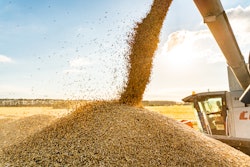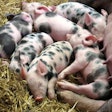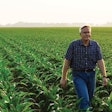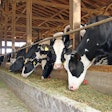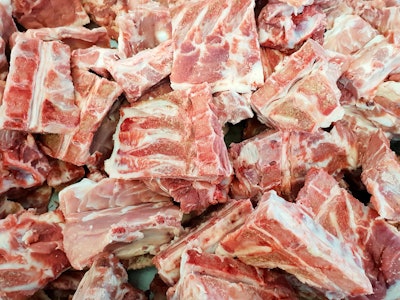
African swine fever (ASF) and other diseases continue to shape the competitive landscape for global pork production and trade,according to a new report from Rabobank.
ASF affects production directly in Asia, and indirectly in Europe throughtrade restrictions, the report said, adding that other diseases, including porcine reproductive and respiratory syndrome (PRRS), have also had a direct effect on production levels and product availability in exporting countries such as the U.S., Mexico and Spain. Other species affected by diseases, including poultry by avian influenza, may also affect trade and consumption patterns for pork.
“Disease pressure and risk are likely to remain a major factor in pork production in the coming years, although the impact will depend on trade policies and restrictions and on how successful the sector is in mitigating a given disease,” the report said.
It is still unknown how advancements such asa vaccine for ASF in Vietnamand gene editing for PRRS will affect the global industry.
“Policymakers also have a role to play in managing the impact of disease through global and bilateral trade agreements in case of disease outbreaks,” the report said. “Expanding the acceptance of the EU’s regionalization policy for ASF to countries outside Europe would be key to mitigating the disease’s impact on trade.”
Other factors affecting global pork exporters
Changes in foreign exchange rates, and shipping, labor and pig production costs are also affecting global pork exporters. Brazil has benefited from these factors, Rabobank said, while the competitiveness of European producers is expected to deteriorate further. Europe’s challenges are due to increasing sustainability and animal welfare standards and the need for investment in these areas.
“Although European pork exports to third countries are still massive, these export flows are expected to decline in the coming years, as processors are likely to have a better chance generating a return on the upcoming investments in the European market,” Rabobank said.
In the U.S. and Canada, producers are supported by low feed prices and access to most growth markets.
“Consolidation in the U.S. and Canadian swine herds and continued progress toward more sustainable production systems will raise the value of U.S. and Canadian pork over time and reduce its competitiveness in world markets,” the report said. “U.S. and Canadian pork and variety meat exports will remain central to the global pork trade, particularly within the North American trade bloc.”
Although China has reached 95% self-sufficiency in pork production, that does not mean trade with that country will end, Rabobank said.
“Producing 100% of demand is economically inefficient – 95% or 105% is economically more efficient because it allows optimizing the product mix based on (changing) demand. We therefore expect China’s annual pork imports to stabilize at around 2.5 million to 3 million metric tons, with muscle meat and offal each accounting for about 50% of total volumes, respectively,” the report said.
Vietnam and the Philippines are also expected to remain important export destinations despite their increasing self-sufficiency.






